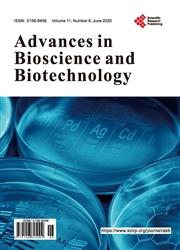Application of Biochemical Tests and Machine Learning Techniques to Diagnose and Evaluate Liver Disease
引用次数: 10
Abstract
Background: The liver function tests (LFTs) remain one of the most commonly employed clinical measures for the diagnosis of hepatobiliary disease. LFTs sometimes referred to as hepatic panel help to determine the health of liver, monitor the progression of a disease and measure the severity of a disease particularly scarring or cirrhosis of the liver. Aims: In this study, we present a new approach to evaluate the natural progression of liver disease through the assessment of eight biochemical parameters: serum total bilirubin (TB), alanine aminotransferase (ALT), aspartate aminotransferase (AST), Alkaline phosphatase (ALP), total protein (TP), albumin (ALB), albumin/globulin (A/G) ratio, and alpha-fetoprotein (AFP) as well as two machine learning (ML) tools—Random Forest and CART to substantive the outcome. Methods: The study was carried out in a total of 100 subjects which included healthy controls (group I-25 patients), patients with acute hepatitis (group II-25 patients), chronic hepatitis (group III-25 patients) and hepatocellular carcinoma (group IV-25 patients) applying both biochemical and Machine Learning methods. Results: Of the eight parameters tested, all except ALP (p = 0.426), showed an overall discriminatory ability as judged by one-factor analysis of variance (p Conclusion: Acute hepatitis (group II) shows a higher level of AST, ALT and ALP compared to chronic hepatitis (group III) and hepatocellular carcinoma (group IV). Two machine learning algorithms also predicted and supported the same biochemical results by correctly classifying liver disease patients. We also recommend that the AFP test can be performed if hepatocellular carcinoma is suspected.生化测试和机器学习技术在肝脏疾病诊断和评估中的应用
背景:肝功能检查(LFTs)仍然是临床上诊断肝胆疾病最常用的方法之一。LFTs有时被称为肝面板,有助于确定肝脏的健康状况,监测疾病的进展,并衡量疾病的严重程度,特别是疤痕或肝硬化。目的:在这项研究中,我们提出了一种评估肝脏疾病自然进展的新方法,通过评估8个生化参数:血清总胆红素(TB)、丙氨酸转氨酶(ALT)、天冬氨酸转氨酶(AST)、碱性磷酸酶(ALP)、总蛋白(TP)、白蛋白(ALB)、白蛋白/球蛋白(a /G)比和甲胎蛋白(AFP),以及两种机器学习(ML)工具-随机森林和CART来评估结果。方法:采用生化和机器学习相结合的方法,对健康对照(I-25组)、急性肝炎患者(II-25组)、慢性肝炎患者(III-25组)和肝细胞癌患者(IV-25组)共100例进行研究。结果:8个检测参数中,除ALP (p = 0.426)外,其他参数通过单因素方差分析均具有总体的区分能力(p)。结论:急性肝炎(II组)的AST、ALT和ALP水平高于慢性肝炎(III组)和肝细胞癌(IV组)。两种机器学习算法也通过正确分类肝病患者预测并支持相同的生化结果。我们还建议,如果怀疑肝细胞癌,可以进行AFP检查。
本文章由计算机程序翻译,如有差异,请以英文原文为准。
求助全文
约1分钟内获得全文
求助全文

 求助内容:
求助内容: 应助结果提醒方式:
应助结果提醒方式:


